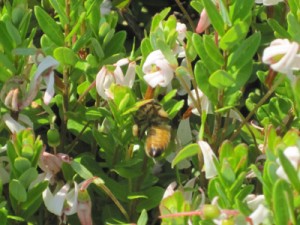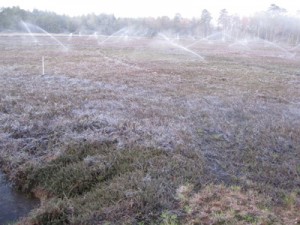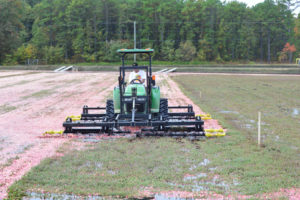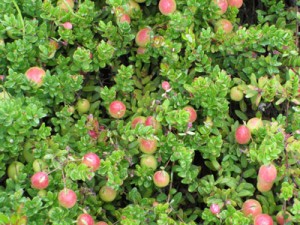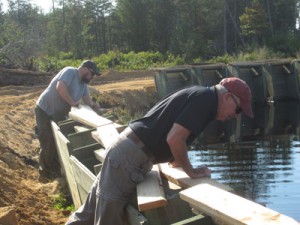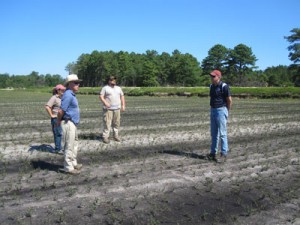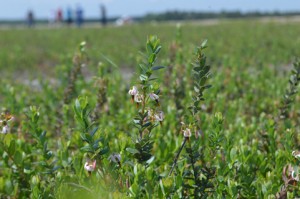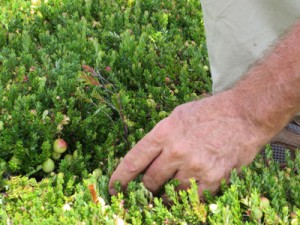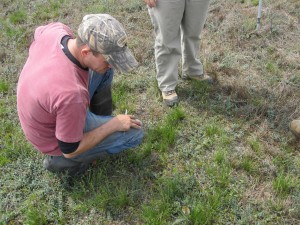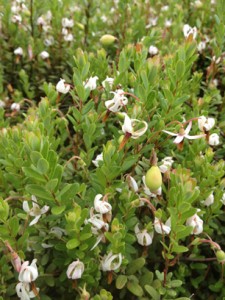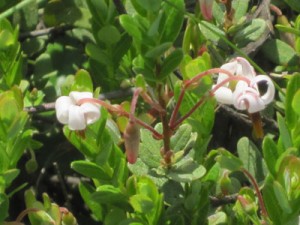Ocean Spray scientist Dan Schiffhauer retired at the end of 2019, and the cranberry community is very pleased to welcome his successor, Lindsay Wells-Hansen! Lindsey, a south Jersey native who earned her undergrad degree at Temple University, comes back home to us from the cranberry community in Wisconsin (where she earned her Ph.D at the University of Wisconsin) and we’re very happy to have her. She’s been making the rounds to meet all of the local growers, and this week was able to sit down at Pine Island with Bill Haines, Mike Haines, and Bryan vonHahmann to talk about our needs for the growing season.
“I think what I’m enjoying most so far about being back in New Jersey is being so close to family again,” Lindsay says. “My husband and I certainly miss our friends and family in Wisconsin, but having the opportunity to be near my side of the family while working in a field that I love is really special. I’m also super excited to be back in the Pine Barrens; I’m a true ‘piney’ at heart, and I absolutely love hiking in and exploring the unique landscape that the Pine Barrens have to offer. Oh, and I’d be lying if I said I wasn’t enjoying the much milder winter temperatures again!”
There are also some regional differences beyond climate! “Although my position here is similar in many ways to the one I held before, I’m experiencing the ‘usual’ challenges that come along with any career change,” Lindsay says. “Establishing new relationships with growers and other colleagues, determining the trajectory of my extension and research programs here, et cetera. One of the cool things about cranberries is that they’re grown a little bit differently in every growing region. While I’m generally familiar with the growing practices here in New Jersey, I’m more familiar with the practices in Wisconsin, so one challenge is going to be learning all of the ins-and-outs of cranberry growing in NJ. Growers have figured out what works best for them on their farm, and it’s always fun to learn why things are done a certain way on one farm or in one growing region but not another. These are all great challenges to have, and I’m very excited to get to know each of the growers, to learn from them, and to better understand their needs so that I can be as helpful as possible in the coming years.”
Linsday was also able to attend ACGA winter meeting last week, and found it enormously helpful. “Not only is the meeting a great opportunity to hear a summary of results from all of the research that was conducted over the past growing season(s), but it also provides a wonderful venue for getting to know growers better. I was pleasantly surprised at how well-attended the meeting was, and being there gave me the opportunity to meet growers that I hadn’t met before and to talk further with those that I had met. The NJ cranberry growers seem to be a very tight-knit group, and everyone has been extremely welcoming so far, which means so much to me and is certainly making the transition into my new role easier.”
One of her favorite aspects of this job is that she gets to be in the field working with growers on a daily basis in an effort to help them produce the best crop possible. “I’m really looking forward to establishing closer relationships with the growers and to getting out in the field again soon once the water comes off! I’m also very much looking forward to working closely with the researchers at Rutgers on some exciting research projects.”
Harvest time is a popular time of year for visitors, but for people who work in the industry, there’s something of interest all year round. Lindsay’s favorite time of year is during bloom: “There’s just something really serene about kneeling in the middle of a cranberry bed that’s in full bloom listening to the constant buzz of thousands of pollinators while watching them work the flowers (unless, of course, you run into some angry bees… then it’s anything but serene!). It’s an exciting time knowing that berries are soon to follow!”
On our part, Pine Island Cranberry is very happy to have a Jersey girl come back home. “We’re really excited to have Lindsay in New Jersey,” says Bill Haines. “We know that she did a great job in Wisconsin, and we’re looking forward to working with her here.”

